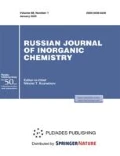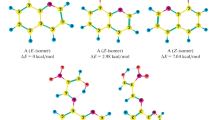Abstract
The starting point of the research was the reaction of chloroacetyl chloride with biphenyl in the presence of aluminum chloride. 4-Biphenylhydroximoyl chloride (HL) was obtained by reacting synthesized 4-(chloroacetyl)biphenyl with alkyl nitride. Four new substituted 4-(alkylaminoisonitrosoacetyl)biphenyles (ketooximes) were prepared by reacting 4-biphenylhydroximoyl chloride with corresponding amines in EtOH. The following amines were used for ligands: p-toluidine, p-chloroaniline, pyrrolidine, and 4-aminoacetophenone. Mononuclear complexes with a metal-ligand ratio of 1: 2 were prepared using cadmium(II), cobalt(II), copper(II), nickel(II), lead(II), and zinc(II) salts. These compounds have been characterized by elemental analyses, AAS, infrared spectra and magnetic susceptibility measurements. The ligands have been further characterized by 1H NMR. The results suggest that the ketooximes act as bidentate ligands which bond metal ions through the oxime and carbonyl oxygen.
Similar content being viewed by others
References
L. Tschugaeff, Ber. 40, 3498 (1907).
J. V. Burakevich, A. M. Lore, and G. P. Volpp, J. Org. Chem. 36, 1 (1971).
I. Karatas and H. I. Ucan, Synth. React. Inorg. Met.-Org. Chem. 28, 383 (1998).
F. Karipcin and I. Karatas, Synth. React. Inorg. Met.-Org. Chem. 31, 1817 (2001).
A. Coskun and I. Karatas, Turk. J. Chem. 28, 173 (2004).
A. Chakravorty, Coord. Chem. Rev. 13, 3 (1974).
P. S. Reddy and K. H. Reddy, Polyhedron 19, 1687 (2000).
F. Karipcin, H. I. Ucan, and I. Karatas, Trans. Met. Chem. 27, 813 (2002).
F. Karipcin, I. Karatas, and H. I. Ucan, Turk. J. Chem. 27, 453 (2003).
N. Levin and W. H. Hartung, J. Org. Chem. 7, 408 (1942).
H. E. Ungnade, B. Fritz, and L. W. Kissinger, Tetrahedron 19, 235 (1963).
H. E. Ungnade, L. W. Kissinger, A. Narath, and D. C. Barham, J. Org. Chem. 28, 134 (1963).
J. E. Caton and C. V. Banks, Inorg. Chem. 6, 1670 (1967).
A. Nakamura, A. Konishi, and S. Otsuka, J. Chem. Soc., Dalton Trans., 488 (1979).
F. A. Cotton and G. Wilkinson, Advanced Inorganic Chemistry, (Wiley, New York, 1988).
M. A. Deveci and G. Irez, Synth. React. Inorg. Met.-Org. Chem. 26, 871 (1996).
Author information
Authors and Affiliations
Additional information
The text was submitted by the authors in English.
Rights and permissions
About this article
Cite this article
Karipcin, F., Arabali, F. Synthesis and characterization of new ketooximes and their complexes. Russ. J. Inorg. Chem. 51, 1467–1472 (2006). https://doi.org/10.1134/S0036023606090105
Received:
Issue Date:
DOI: https://doi.org/10.1134/S0036023606090105




